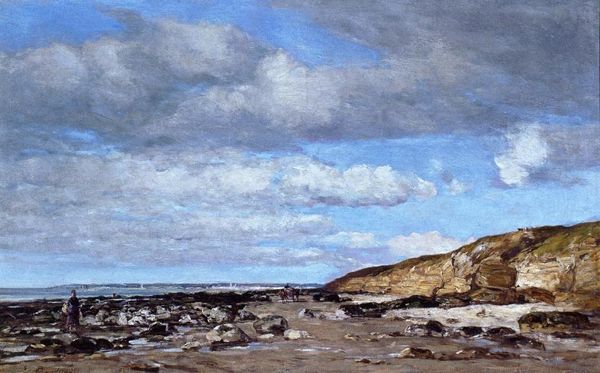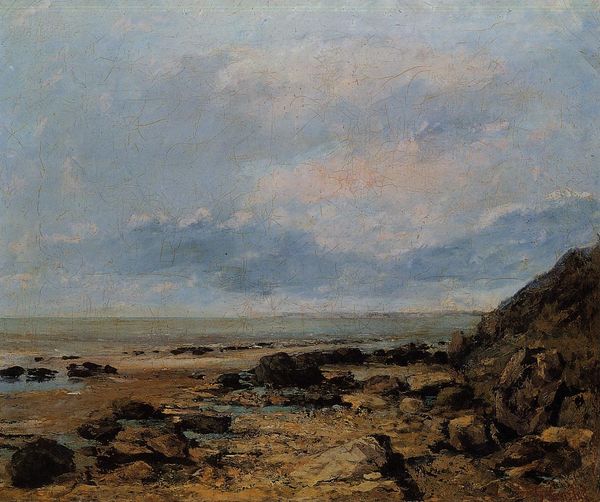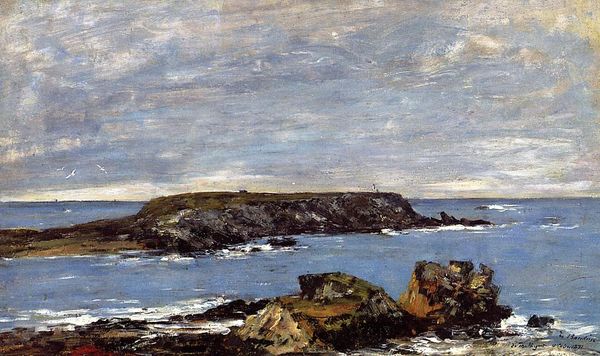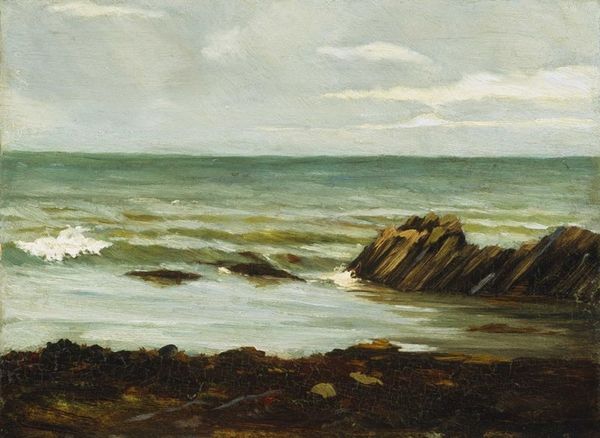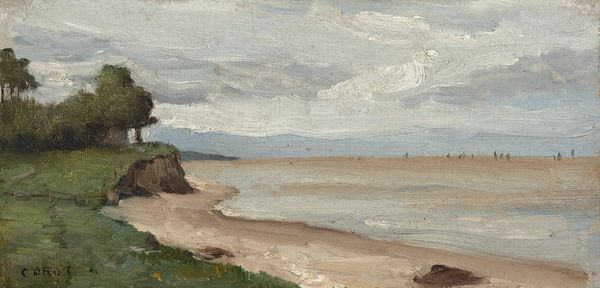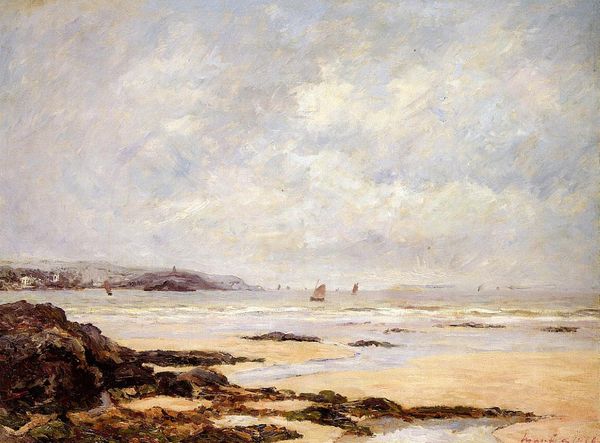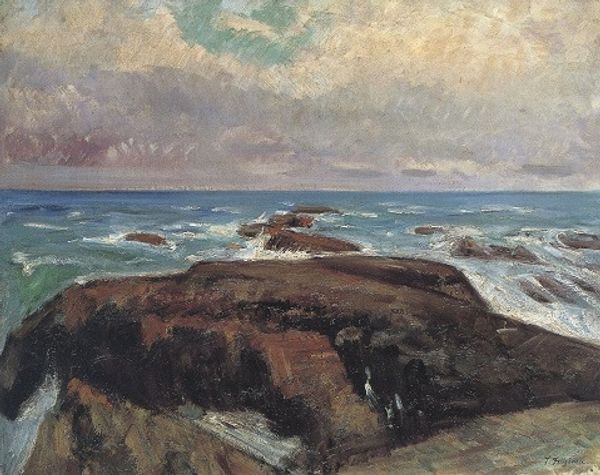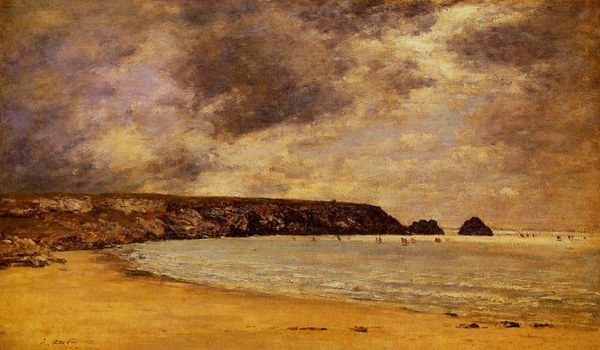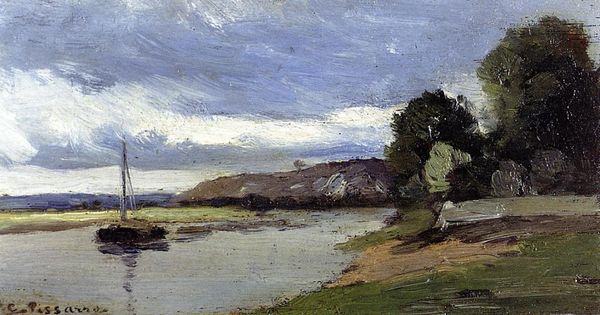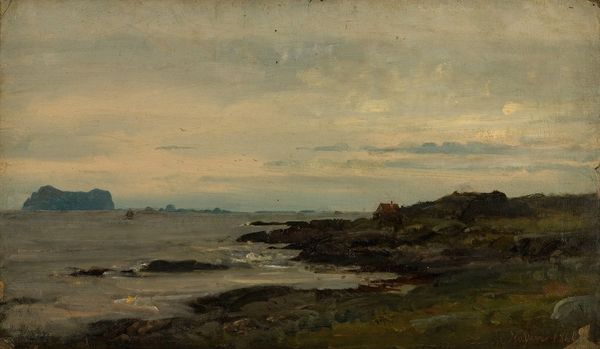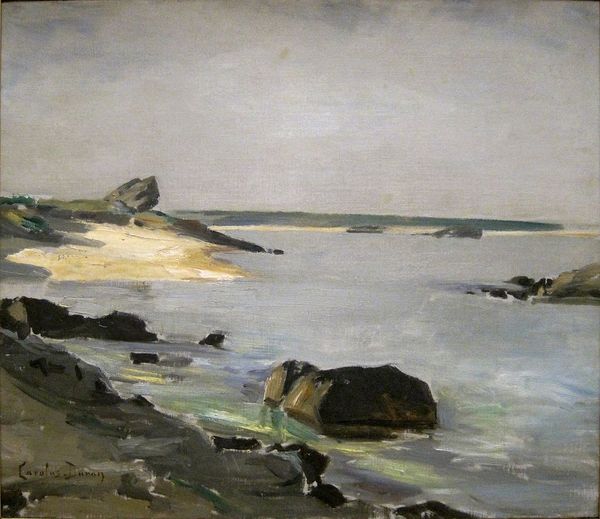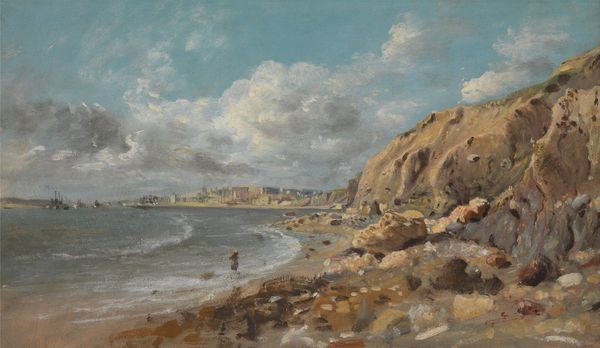
Copyright: Public domain
Eugène Boudin made this painting, The Sea at Douarnenez, in France with oil on wood. It is an example of the artist's lifelong interest in seascapes and the changing effects of light and atmosphere on the coast of France. Boudin's works provide a glimpse into the emerging leisure culture of 19th-century France, particularly the growing popularity of seaside resorts. The artwork invites us to consider the social and cultural context in which it was created, particularly the rise of tourism and the changing perception of the natural world. The artist presents a perspective of the ocean that is typical of 19th century landscape painting. Is it a purely objective view, or can we detect in it the cultural values that have shaped its production? It is important to note that, even in apparently objective depictions of the natural world, one can often find traces of the prevailing social and cultural attitudes of the time. As historians, we can examine how the art market and the French academy influenced Boudin's painting. By studying historical documents, such as exhibition reviews and sales records, we can gain a deeper understanding of its cultural significance. Art is never created in a vacuum.
Comments
No comments
Be the first to comment and join the conversation on the ultimate creative platform.
